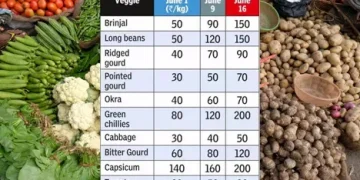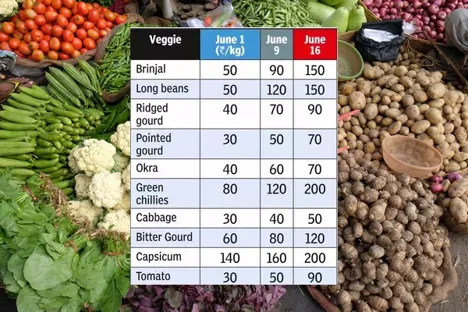Analyzing Factors Driving Price Escalation and Market Dynamics
Bengal’s agricultural landscape faces significant hurdles amidst a tumultuous weather cycle and logistical disruptions, resulting in soaring vegetable prices across the state.
Recent weather patterns have been erratic, ranging from severe dry heatwaves to the aftermath of Cyclone Remal, which brought heavy rains followed by a moist-heat wave. These conditions have severely affected crop yield and quality, particularly in the vegetable sector.
According to Anirban Ghosh, an agro-economist, the cumulative effect of excessive heat, delayed monsoon onset, and disruptions in train services has led to a staggering 30% to 50% rise in vegetable prices within the past few days alone. Over a fortnight, some prices have surged by as much as 80%. The extension work at Sealdah station, which disrupted train services, stands out as a critical factor exacerbating supply chain challenges.
Kamal De, president of the West Bengal Vegetables Growers’ and Vendors’ Association, emphasized that high temperatures have significantly reduced yields, with plants struggling to bloom and retain flowers. Farmers, such as those in Bhangar, are grappling with delayed monsoons impacting underground water reserves and irrigation channels, compounding agricultural challenges.
In urban markets like Maniktala, vendors such as Kartick Saha report a paradoxical decline in customer demand despite the availability of fresh, high-quality vegetables. This trend persists as prices continue to climb, reflecting the disconnect between supply chain challenges and consumer affordability.
The current scenario underscores the resilience and adaptability required within Bengal’s agricultural sector to navigate unpredictable weather patterns and logistical hurdles. Stakeholders across the industry are strategizing to mitigate these challenges, ensuring sustainable production and market stability in the face of adversity.


































